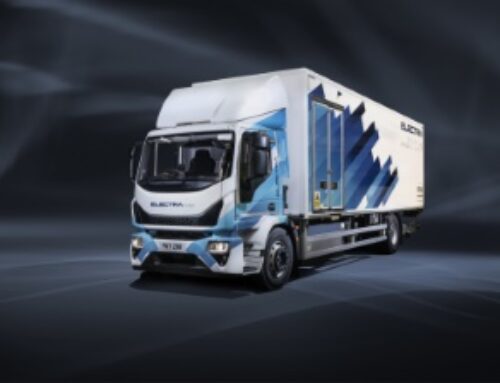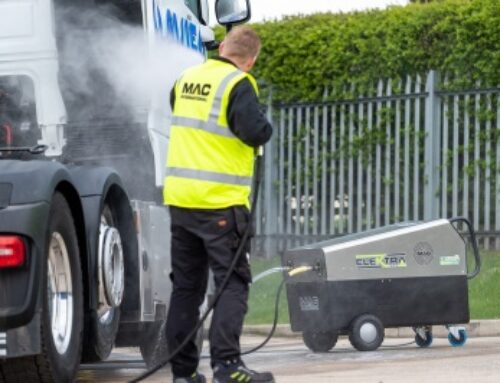Lytx: DVS is only the beginning
 Technology provider Lytx has warned that, while eliminating blind spots with sensors and cameras helps greatly reduce the likelihood of accidents, such measures are not by themselves enough in the drive for safer roads.
Technology provider Lytx has warned that, while eliminating blind spots with sensors and cameras helps greatly reduce the likelihood of accidents, such measures are not by themselves enough in the drive for safer roads.
“It is a sad statistic that heavy goods vehicles (HGVs) are still disproportionally involved in road accidents despite only accounting for 4 per cent of miles driven in London, according to The Royal Society for the Prevention of Accidents,” said Damian Penney, vice president, Europe at Lytx.
The Direct Vision Standard (DVS) has been one of the most important measures put in place to reduce accidents caused by blind spots and other vision issues, says Damian, and represents a simple equation; better visibility leads to fewer casualties.
“Many HGVs were not designed for small busy roads and have elevated cabs that create dangerous blind spots. To make these vehicles safer for London’s roads, preventative measures such as dashcams, sensors or audible in-cab driver alerts, can be introduced.
“For example, solutions are available that allow the positioning of 360° auxiliary cameras with wide-angle, dual lenses at the front, rear, left, and right side of the vehicle to significantly improve visibility for drivers.”
However, he added: “Eliminating blind spots with sensors and cameras helps greatly reduce the likelihood of accidents, but by itself, it’s not enough.”
With accidents still happening, it’s essential to understand why, says Damian.
“Introducing innovative video telematics technologies such as machine vision and artificial intelligence (MV+AI) enables fleet managers to understand what’s happened in the run-up to an incident,” he said.
“The machine vision scans and recognises both the internal and external environment of the vehicle, while AI identifies anything that could be a risk and triggers a recording. This could include the driver’s behaviour, for example, if they are looking at their mobile phone. Essentially, MV identifies the issue, while AI determines how risky that issue is.
“Recognising specific behaviours helps to avoid repeating them. These video clips, triggered by the AI, offer relevant and actionable insights that operators can refer to in the coaching of drivers, helping them to develop better habits and reduce risk.
“They also provide fleet managers with a 360-degree view of what is happening around and inside the vehicle cabs and give them an understanding of ‘big picture’ trends across the entire fleet.”
Video telematics combined with a driver safety programme go far further than improving visibility, he adds – they improve driver performance by recognising and rewarding the safest drivers while training and developing those who stand to improve.
“A greater understanding of what’s happening, and why, helps to build a safer fleet. This, in turn, reduces claims and collision costs.
“And while MV+AI delivers this insight to fleet managers in real-time, it also empowers drivers. In the event of an incident, a 12-second clip can be shared, providing an instant view of what happened. Or, when risky driver behaviour is occurring, an in-cab audio alert is triggered, enabling the driver to rectify their behaviour immediately.
“By placing some of this power into the hands of the drivers, they are encouraged to self-coach and take responsibility for their actions. A more transparent approach increases co-operations and makes fleet management more agile and responsive.”
Damian argues that the Mayor of London’s Vision Zero action plan, which aims to eliminate all deaths and serious injuries from the city’s transport network by 2041, “is ambitious, and so it should be.”
“Matching its ambition, transport operators shouldn’t stop at DVS compliance, but need to play their part in improving road safety by supporting their drivers in any way possible,” he said.
“This includes the use of technology and focusing on a company culture in which safety is paramount. A safety culture that makes use of telematics to identify, categorise, and score the driving behaviours most related to collisions is crucial.”
The implementation of a successful safety programme requires cultural change, he says, which is notoriously difficult to achieve.
“While the DVS is a useful starting point, ensuring visibility from the cab is just the beginning. It has to be clear to everyone in a fleet – from board members to drivers – that the safety of drivers as well as other road users is the number one priority. Preventing, predicting and reducing risky behaviour while driving should surely be high on the list for companies and drivers, as every life lost is one too many.
“By building trust between managers and drivers, technology can be used to its maximum and a true safety culture can be developed. Only then can practical measures such as DVS bring about the change they promise.”











